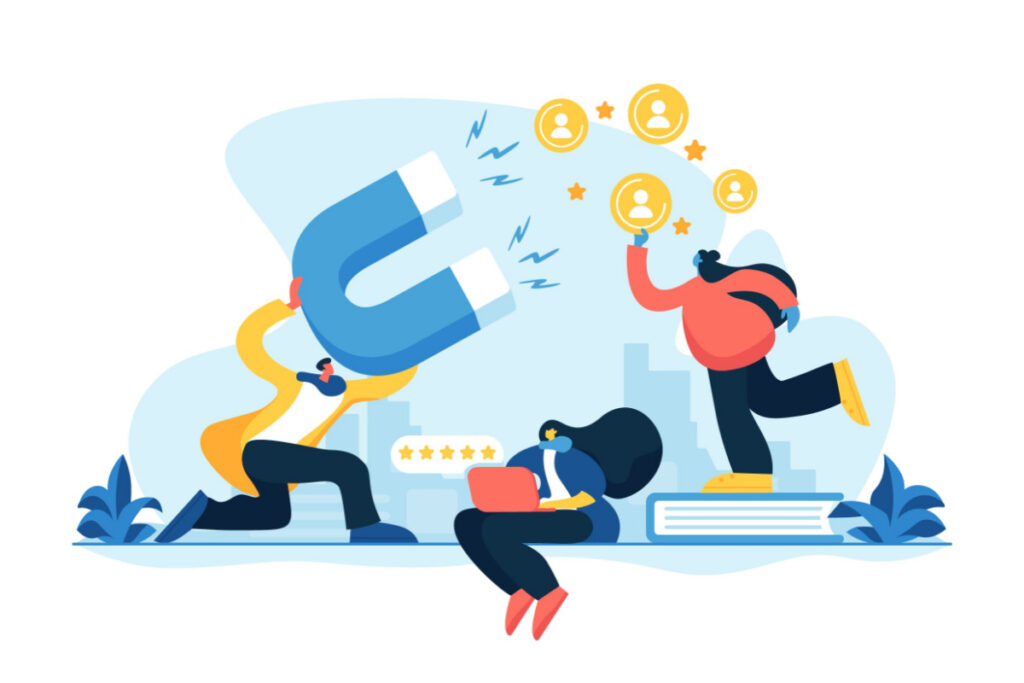This is an unpreceded time for consumer subscription businesses.
“Right now, what we’re seeing is that for every one subscription a customer adds on average, they’re actually removing one as well,” says Haroon Mokhtarzada, CEO of Rocket Money (previously Truebill). “It’s the first time we’ve seen it flatten to that point.”

Consumers still want the ease and convenience of a subscription, but they will not settle for an offering that they are not sure will enrich their lives. And that statement also applies to your existing customers: Are you providing them with enough value to earn their recurring payments?
As your company makes decisions on where to invest your money as a subscription business, they must consider what their existing and targeted customers want and expect from your brand.
“Consumer brands aren’t just competing in their respective marketplace anymore,” says Paul Chambers, Co-Founder of SubSummit. “They’re competing for the customer’s share of wallet, so unless you’re Amazon, Netflix, or a global business, you need to focus on how to foster customer loyalty and grow your customer lifetime value (LTV).”
So how do you turn first-time customers into loyal brand advocates?
Collect and Leverage Customer Data
Outside of making more informed decisions about your business, data can help you create a shopping experience that your customers will love.
“If you want to be able to grow your business, data is definitely one of the keys,” says Jing Xue, Director of Product Management at Wyze Labs. “It helps you to know where your targeting is, especially for a startup with limited resources. You do not just want to shoot bullets into the dark. You want to know where your goals are, and data is going to help you get there.”

Utilizing your customer data can help identify what is working and what is hurting your product or service offering. From a bad checkout experience to an unclear value proposition, it allows you to refine your business and make more informed decisions.
On top of that, collecting customer data gives you the opportunity to create an amazing, tailor-made experience for each customer, whether they are here for the first time or are returning users.
Personalization might have started as a nice feature for your email or SMS campaigns, but it has become ingrained in today’s direct-to-consumer (DTC) economy. More than 70% of consumers expect companies to deliver personalized interactions and 76% get frustrated when this does not happen, according to McKinsey.
You can learn more about utilizing data by reading this article by Thomas Marks, SVP of Marketing at sticky.io.
Create Engaging and Informative Content
Creating digital content is one of the easiest ways to build trust and develop relationships with your customers. However, you will not catch your customers’ attention with a dry blog that is optimized for search.
There is more content available to users than ever before, and so much of it is just noise and fluff. By utilizing your customer data, you can find and understand all the pain points that your audience is seeking solutions for.
Your content can and should come in all shapes and sizes. Not only do consumers have access to an endless amount of content, they also are consuming it in various ways.

You might be neglecting more than half your audience if the only way you think they are taking in content is through written blogs and newsletters. For instance, leveraging video content is more important than ever before – whether through social media or your own website.
More than 95% of people have watched videos that help them understand how to use a product or service, and 89% of people say they made a purchase after watching a video, according to Wyzowl.
Creating an omnichannel approach to your content strategy ensures you are giving your audience as many opportunities as possible to find the information. Therefore, you are creating additional avenues to build that connection with your audience and turn them into loyal subscribers.
When creating your content strategy, make sure to keep these things in mind:
- Listen to your audience’s pain points and address them through informative and engaging content.
- Avoid using every piece of content to promote your own product or service. Establish yourself as an authority in your field or industry, and your customers will begin to trust you with a purchase.
- Utilize customer data to determine how your audience is consuming your content. Which form of content performs best on your social media platforms? Where do most referrals to your website come from? All methods of communication should be analyzed to determine which medium deserves your best content and most effort.
Deliver a Consistent, Superior Customer Service Experience
While it is easy to get caught up in the data, never forget that you are still dealing with humans. We all inherently want to get treated well, and good customer service is critical in earning a customer’s loyalty and business.

This is not just limited to dealing with customer complaints, although that is certainly part of it. Creating a superior omnichannel customer experience will give you a key competitive advantage in your market.
From your website and customer service team to your email marketing and direct mail efforts, you need to make sure your customers feel like they are valued – not just another tally on your sales sheet.
In fact, 88% of customers say the experience a company provides is as important as its product or services, according to Salesforce. Moreover, nearly three out of five consumers report that good customer service is vital for them to feel loyalty toward a brand, according to Zendesk.
Using personalization, consumer data, and a superior customer experience can go a long way in making your customers feel important. In turn, you will earn their trust, loyalty, and ultimately will be able to increase their LTV.
Post-Purchase Engagement
Your customer experience should never end once they complete a purchase with you.
In a sense, consumers are getting a little spoiled these days. There are so many companies that cultivate loyal brand advocates by continuing to communicate, offer insights, and prolong the value of their products or services.
This does not mean to hit them with upsell after upsell. Try to demonstrate that you care about their experience with your product or service. Asking how they are enjoying the product, showing appreciation for their purchase, and pointing them to resources that will enhance their experience are a few simple examples.
By doing this – whether through the checkout flow, email, SMS, social, or another medium – you will increase your customer LTV.
Never let the thought of ‘this company doesn’t care about me’ or ‘all they wanted was my money’ creep into your customer’s head. A consumer who knows you care about them as an individual will pay dividends as you grow your subscription.
Offer Customer Loyalty and Referral Programs that Actually Add Value
Loyalty and referral programs are certainly not a new tactic for subscriptions. However, the importance and impact of them can often be overlooked.

“Free points programs are company-centric. They rely heavily on breakage or lack of usage. They’ve got perceived value, but maybe low ‘real’ value, whereas VIP programs are customer-centric and are seeing pretty deep engagement, deeper usage, and in most cases, are valuable programs,” said Dave Cobban, Founding Partner of UNBRKBLE at SubSummit 2021.
In fact, 45% of consumers do not appreciate how long it takes to earn rewards from their loyalty programs while 27% do not think the rewards are valuable enough, according to Merkle.
“In these challenging times when money is tighter than ever, brands are in a unique position to demonstrate the value they can offer by making customers’ money go further,” says Rob McDonald, Chief Commercial Officer of IAG Loyalty. “Brands have a wealth of information on their loyal customers which gives them unique insight to create rewarding offers and experiences that ensure those customers get the most from their spend.”
The truth is that retaining customers is easier than finding new ones. That is why all subscriptions are looking to build subscriber loyalty and create the best experience possible.
If you provide a great experience, consumers are much more likely to refer you to their friends, which is one of the most underutilized acquisition strategies in the DTC space, according to Jay Myers, Co-Founder of Bold Commerce.
“You can’t acquire your way to growth…you can’t save your way to growth,” said Myers in his SubSummit 2022 session. “But you can refer your way to growth…your number-one source of sales needs to be Referred by Friend.”
Myers goes on to list the three aspects of a referral program that you need to have for it to be effective:
- Create scarcity
- Leverage social proof
- Be incredibly valuable
Creating loyalty and referral programs cannot just be an afterthought. You must show your appreciation to your customers for them to become invested in your success.
How to Increase Your LTV
While listening to your audience is a well-known adage in the subscription space, there might be a better way to phrase it: Make sure each of your customers feels heard.

Consumers might seem like some complex algorithm that is impossible to predict, but they are still just humans who inherently want to feel valued and appreciated.
Subscriptions have an advantage over most businesses because you are set up to create endless personal touchpoints that can create loyalty and advocacy.
If your business puts a concerted effort into these five tactics, you will set yourself up for both short- and long-term success.
- Utilize customer data to make better decisions on how to reach your audience and create a personalized experience that makes your customers feel valued.
- Create unique content across multiple platforms that speaks directly to your customers.
- Curate a thorough customer service experience that proves to your customers that they are more than just a number.
- Prolong the value of your product or service by having a plan for post-purchase communication.
- Properly invest in your customer loyalty and referral programs instead of being an afterthought.


